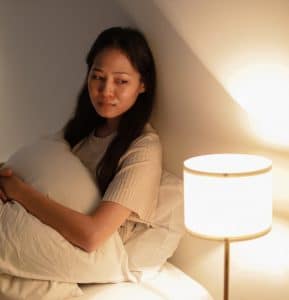Table of Contents
According to a report released by the Institute of Mental Health in 2018, 1 in 7 people in Singapore are experiencing a mental health disorder in their lives, with more than three-quarters of the population not seeking assistance from a mental health therapist. Of those who experience mental health illnesses, the most prevalent disorders within that population, according to a self-report survey conducted between 2016 and 2018, are major depression, bipolar, obsessive-compulsive disorder, anxiety, and alcohol abuse.
These statistics indicate that the Singaporean population has a significant prevalence of mental health problems within the country. Yet, many citizens are refraining from seeking treatment, primarily due to the stigma surrounding mental health topics. If left untreated, the symptoms experienced can cause severe disruptions in a client’s life. That being said, do mental health specialists need to worry about their safety when working with clients? Today, we will be diving deep into the safety of therapy and remind mental health specialists of precautions they need to take in their practice.
Instances of Violence Against Therapists
Workplace aggression among mental health professionals is common, but psychiatrists seem to be hit the hardest compared to their peers.

While instances of violence towards therapists on behalf of their clients are rare, it does still occur. For example, a New York City psychiatrist, Kathryn Faughey, was attacked and murdered by her client David Tarloff, who had a history of severe mental health problems. At the same time, she was alone in her office one evening. Similarly, psychiatrist Wayne Fenton, and avid researcher of schizophrenia for the National Institute of Mental Health, was found dead in his home office. He was murdered by his 19-year-old client, who was experiencing mental health problems.
After an assault occurs on a mental health professional, the most frequently raised is whether the attack could have been prevented. In the aforementioned cases, both practitioners were on private property or alone with their patients without anyone else in the immediate surrounding area. Are private home practices safe spaces for therapists to treat their clients and should risk management practices be further recommended to at-home therapists?
An Important Note
Before analyzing the risks of at-home safety in therapy and working late hours in private practice, it is imperative to note that studies indicate that the majority of patients who are dealing with mental health problems are no more violent than anyone else who is not experiencing a mental health crisis. Only roughly 3% to 5% of violence can be attributed to someone experiencing mental illness. Therefore, we will again stress the importance that most people dealing with mental health illnesses are not violent.
Instead, these instances that cost psychiatrists their lives were due to individuals experiencing severe mental health and disturbing behaviors that do not reflect the rest of the population. Additionally, this belief surrounding the topic that mental health patients are dangerous contributes to the overall stigma of mental health, which further puts people’s lives at risk. They are afraid to come forward with their problems and seek help. We encourage readers to become informed of the nature of mental health to help break this stigma and promote accessibility for mental health services throughout Singapore. With that being said, we will now take a look at some of the risk factors that may put the lives of therapists at risk at their home practice.
Risk Factors of Safety in Therapy
While there are benefits of working at home as a therapist as well as working late evenings to increase your income, there are risk factors that therapists must keep in mind when it comes to their overall safety as a mental health practitioner:

1. The Physical Environment. Whether you are working at your home or late at night in the office, therapists must keep in mind the risk factors related to their natural physical environments. For example, both settings likely suggest you will be alone with your patients without the ability to call for help should you need it. When working at home, there is also the risk of putting your family in harm should anything go wrong.
2. The Use of Assessments. Therapists should be providing an assessment with each client upon meeting them and continuously throughout their treatment path to determine any risks in behaviors that may occur throughout your time with them. This way, you can track their progress and indicate an initial warning sign that you may pick up on.
3. Therapist Vulnerability. Although rare, some patients can psychologically manipulate therapist vulnerabilities to push the boundaries of what is acceptable in a practitioner-client relationship. Therefore, again it is essential to pick up on red-flags where you can to determine whether or not you are being manipulated.
Final Thoughts
As you can see, while being a mental health provider does put these professionals at risk due to their work’s nature, the best solution for them is to ensure they create boundaries with their patients and avoid at-home practices/late-night sessions in their facility while alone. For therapists looking for options for spaces where their safety is protected from possibilities of harm from their clients, coworking spaces are a fantastic solution to this problem.
A Space Between, conveniently established in a central location right above Tanjong Pagar MRT, is a copractice space specifically for therapists in Singapore to meet with their clients in a secure and safe environment without practicing out of their home or alone in the office. A Space Between runs 365/24/7 and offers safe therapy rooms for those who need to speak with their mental health practitioner in a welcoming environment whenever they need it. Each room is equipped with a panic button. There is also monitored surveillance throughout the open areas of the facility to ensure the utmost safety of our staff, therapists, and civilians who enter our building.

If you would like to find out more about A Space Between, please sign up for a non-obligatory tour today and let us show you around!
I’m a writer for different websites and blogs. A psychology major, I love reading and learning about mental health.



